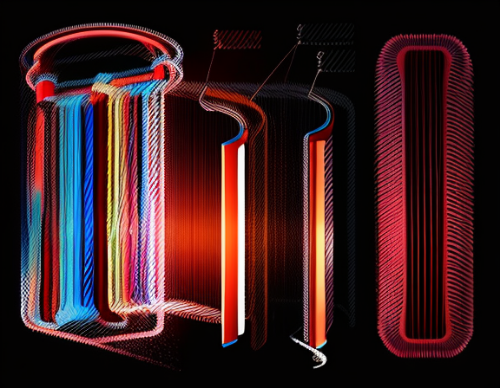Exploring the Inner Workings of Lithium-Ion Batteries: Understanding and Recycling
Introduction: Lithium-ion batteries have become an indispensable part of our modern lives, powering everything from smartphones to electric vehicles. Yet, despite their ubiquity, many of us remain unaware of what lies inside these compact powerhouses and how we can responsibly recycle them. In this article, we delve into the intricate components of lithium-ion batteries, shed light on the importance of recycling, and share some fascinating insights into this essential technology.
Understanding the Anatomy of a Lithium-Ion Battery: At first glance, a lithium-ion battery may seem like a simple device, but its internal structure is surprisingly complex. These batteries consist of several key components:
Anode: Typically made of graphite, the anode serves as the source of lithium ions during the battery's discharge cycle.
Cathode: Comprising materials such as lithium cobalt oxide or lithium iron phosphate, the cathode acts as the receiver of lithium ions during charging.
Separator: A porous membrane that keeps the anode and cathode apart while allowing the flow of lithium ions.
Electrolyte: A conductive solution, usually composed of lithium salts dissolved in a solvent, facilitating the movement of ions between the anode and cathode.
Current Collectors: Thin foils made of aluminum for the cathode and copper for the anode, which collect and distribute electrical current.
Recycling Lithium-Ion Batteries: Why it Matters: As the demand for lithium-ion batteries continues to rise, so does the importance of recycling them responsibly. These batteries contain valuable materials like lithium, cobalt, and nickel, which can be extracted and reused in new battery production, thus reducing the need for raw materials and minimizing environmental impact.
The recycling process typically involves:
Collection: Batteries are gathered from various sources, including electronic devices, electric vehicles, and industrial applications.
Sorting: Batteries are sorted based on chemistry, size, and condition to optimize the recycling process.
Disassembly: Components are separated, and hazardous materials are handled safely to prevent environmental contamination.
Material Recovery: Valuable metals such as lithium, cobalt, and nickel are extracted through processes like smelting, leaching, and precipitation.
Refining and Reuse: Recovered materials are purified and used to manufacture new batteries or other products, closing the loop on the battery lifecycle.
By recycling lithium-ion batteries, we not only conserve precious resources but also reduce the environmental footprint associated with their production and disposal.
Five Fun Facts About Lithium-Ion Batteries:
The first practical lithium-ion battery was developed by John B. Goodenough, Rachid Yazami, and Akira Yoshino in the 1980s, revolutionizing portable electronics.
Lithium-ion batteries can be found in a wide range of devices, from smartphones and laptops to power tools and electric bicycles.
Tesla's Gigafactory in Nevada is one of the largest lithium-ion battery manufacturing plants in the world, producing batteries for electric vehicles and energy storage systems.
The energy density of lithium-ion batteries has approximately doubled since their introduction, leading to longer-lasting and more efficient devices.
Researchers are exploring alternative materials and designs to further improve the performance and sustainability of lithium-ion batteries, paving the way for future innovations in energy storage technology.
Conclusion: As we continue to rely on lithium-ion batteries to power our increasingly electrified world, understanding their inner workings and embracing responsible recycling practices are more important than ever. By educating ourselves and taking action to recycle these essential components of modern technology, we can contribute to a more sustainable future for generations to come.
To learn more about lithium-ion battery recycling and how you can make a positive impact, Contact us 9409137897 / 9409137849


